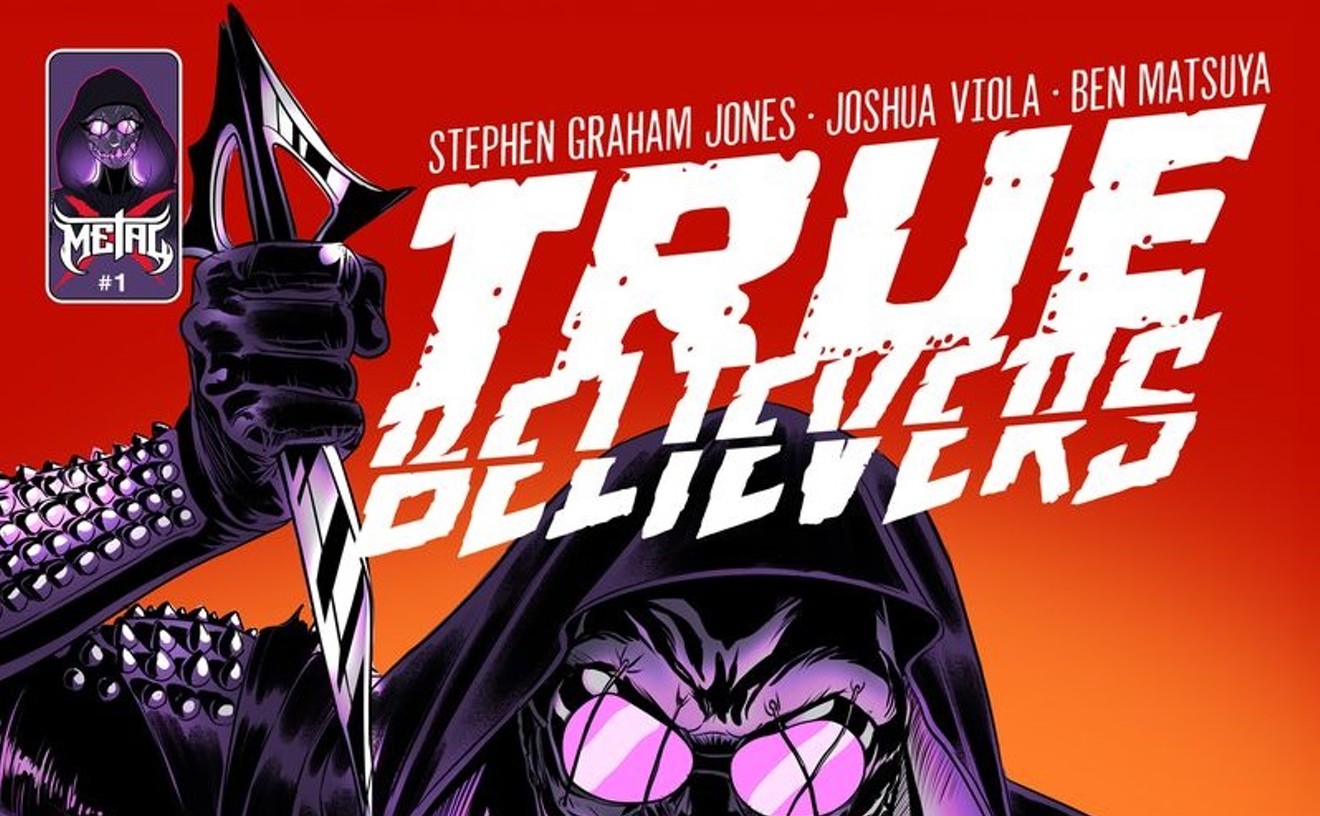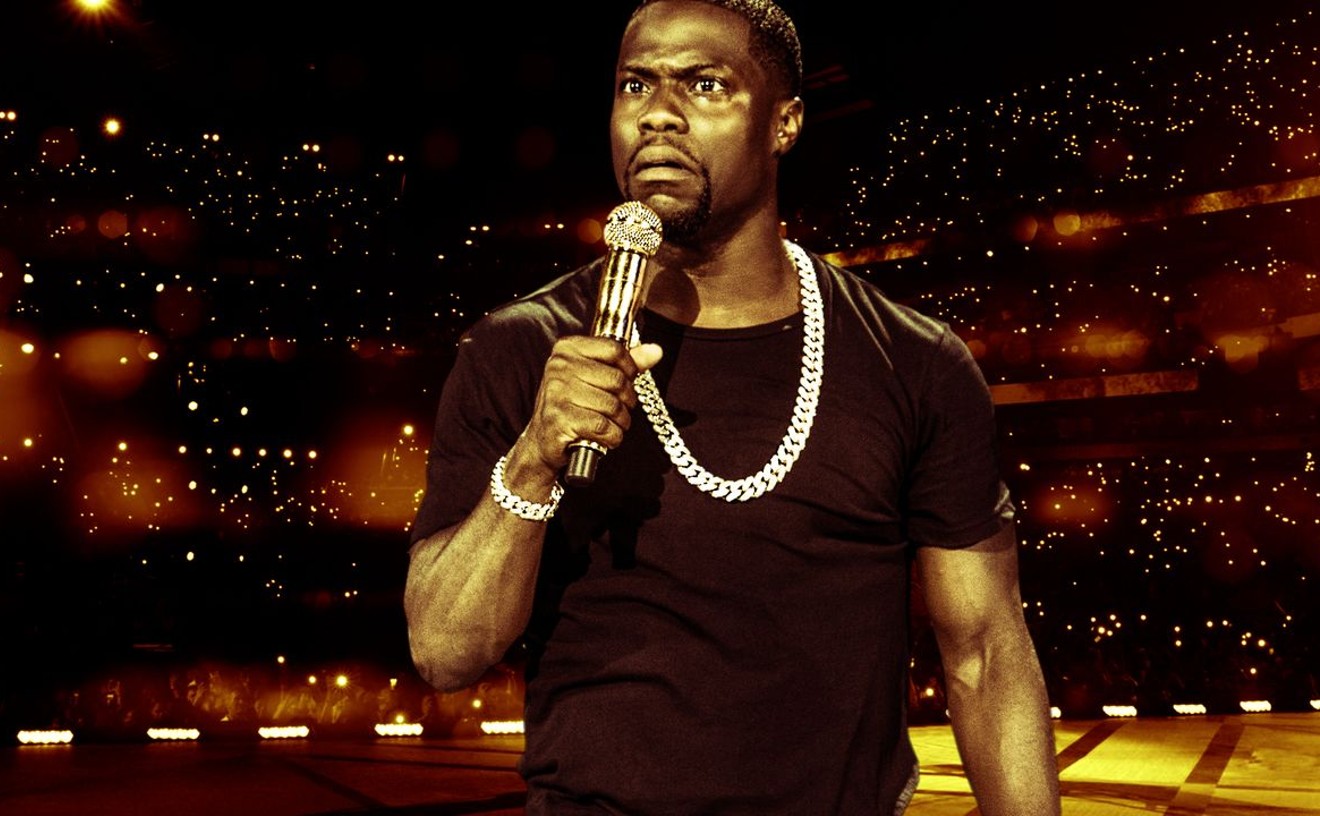The reality was dumber and messier. Manson was no revolutionary, but a manipulative small-time crook who utilized anti-war rhetoric to ensnare a gaggle of impressionable young girls. Some of them, like Charlie himself, were from miserable, fractured homes; others seemed comfortably middle-class. The group operated in a miasma of stupidity, drugs and sex; many found killing sensually intoxicating, and the victims were picked at random.
I doubt any members of the LIDA Project's cast were around in the late '60s, but they've caught something valid about the era. They present the Manson saga in a series of brief scenes, each one a parody of a type of television program: sitcom, reality show, Court TV segment, drama. Manson Family Values begins with a partial re-enactment of the murders on Cielo Drive; then there's a carnival show in which Manson, played by a glittery-eyed Guy Williams, steps out with his ladies. The murder of Gary Hinman by three family members, including Bobby Beausoleil, is sandwiched between coy choruses of "I Want to Be Bobby's Girl." In a grim way, a lot of these scenes are very funny, and the killings are so stylized that they leave us more thoughtful than distressed. But the evening's last moments, when Manson has been pulled away in prison blues and three women kneel before us with shaved heads and blood-red crosses on their foreheads, are moving.
Apparently, the actors developed the script, created their roles and arrived at the playing style through several months of exploratory exercises. They operate seamlessly on stage, synchronized in the comic bits, strong in their individual scenes but at other times seeming like the separate tentacles of one breathing creature. They create resonant visual images.
The staging, by D. Jason Humphrey, is masterful. He has transformed the theater into a narrow, claustrophobic box; the audience is seated on risers at one end, facing what looks like a long, flag-draped corridor. When the actors retreat along it, they seem to get smaller and smaller. There's a TV screen on each side of the stage, emitting buzzing, disjointed sounds and showing now an abstract image, now a young woman's face with her lips slowly opening, now a glistening, heaving object that looks like a dolphin rising but turns out to be a human tongue.
The overall tone of Manson Family Values is mocking; it doesn't judge, sum up or enlighten. Rather, it evokes. It's clear that in real life, at least two of the Manson women have come to deeply repent their crimes, but although some of their words are spoken at LIDA, the tone is unconvincing.
There are a few problems with the production: The lighting is sometimes too dim; one or two scenes are unnecessarily protracted; the play's ending is weak. Also, in order to understand everything you see, it helps to be up on your Mansonology. But this is interesting, important theater -- skilled, committed and genuinely exploratory.
The iconoclasm of the '60s was reflected in the theater of the time. Performers blew away conventions, tossing out realism, the fourth wall, the well-made play. There was theater that questioned the distinction between real life and performance, wordless theater, incantatory theater, theater that invoked madness, theater where the actors offered you food, pulled you out of your seat or danced with you, plays during the course of which live rats were released on stage. There was an idea of theater as church and as transformation.
You can see that the LIDA cast worked in that spirit, and the performances are dedicated. Guy Williams is a mind-blowing Manson -- strutter, puppeteer, avenger, madman and Christ impersonator, at once all-powerful and impotent. Jadelynn Stahl's Susan Atkins -- aka Sexy Sadie -- is equally memorable. Stahl gives the woman who was arguably the craziest and angriest member of Manson's entourage her full due. Jenne Harris has a creepy, touching moment when, as Sandra Good, she declares her undying loyalty to Manson. Elgin Kelley is convincing as a distraught Linda Kasabian, who turned state's evidence against the others.
The Manson women claimed to have learned their violence from American culture. At one level, this is a pretty empty excuse. But juxtapose the inanity of '50s and '60s television and its parade of sanitized cowboy killings against the backdrop of the Vietnam War, recall that this was a generation driven half mad by images of real bombs and napalm-burned children, and then think about the interplay between fantasy and reality.
While the Manson family rampaged in Los Angeles, I was living in a radical commune in San Diego, where the worst things we did were bake lumpy bread, bicker about money and politics and hurt each other's feelings. We discussed revolutionary violence in the abstract, though we never carried it out. The same can't be said of the far-right group who (working, we later learned, with the FBI) blew up a car in front of our house, took a hammer to our typesetter, threatened us with death and ultimately shot one of our members as she stood by a window searching in her purse for cigarette money (the bullet permanently damaged her right arm). However, I heard about another commune in which a young woman ran into trouble during childbirth. The hospital, being The Man's territory, was out of bounds. So the people in her commune dropped acid, encircled her, held hands and chanted till she died.











